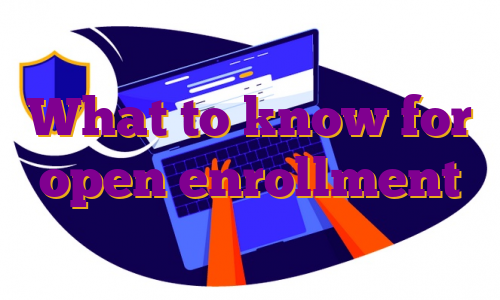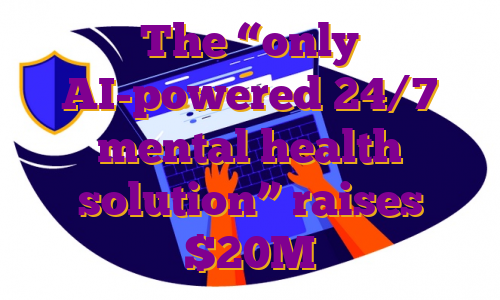Mike Mergen | Bloomberg | Getty ImagesIf you’re a Medicare beneficiary, now’s the time to evaluate your prescription drug coverage for 2023.In addition to checking during Medicare’s annual fall open enrollment whether there’s a more cost-effective plan for you, some legislative changes take effect next year that may reduce how much you pay out of pocket for your coverage.”It’s a quality of life issue,” said Elizabeth Gavino, founder of Lewin & Gavino and an independent broker and general agent for Medicare plans. “Saving money on medications means there’s more Social Security money left for other necessities in life.”More from Year-End PlanningHere’s a look at more coverage on what to do finance-wise as the end of the year approaches:Medicare’s enrollment period opened Oct. 15 and runs through Dec. 7. Beneficiaries can make changes to their coverage during this period.Prescription drugs are generally delivered through Medicare Part D. Of the estimated 64.5 million people enrolled in Medicare, about 50 million have such coverage, through either a standalone Part D plan or an Advantage Plan — both of which are offered by private insurance companies. Advantage Plans deliver Part A (hospital coverage) and Part B (outpatient care) and usually Part D.Here are some changes you may notice next year, as well as some tips for what to look for when evaluating your options for 2023.Insulin costs will be cappedSome changes to prescription drug coverage, enacted as part of the Inflation Reduction Act, take effect next year. This include a monthly $35 cap on cost-sharing for insulin under Part D, which will start on Jan. 1. (Some plans may already offer a $35 cap.)Part D deductibles — which vary from plan to plan but cannot be more than $505 in 2023, up from $480 this year — also won’t apply to the covered insulin product. For beneficiaries who take insulin through a traditional pump (which falls under Part B), the benefit starts July 1.”Some of my clients had to choose between buying food and buying insulin [or] rationing the insulin to make it last longer, thereby taking much less than the prescribed amount,” Gavino said. “This was dangerous, and now they can use the right amount they need to live.”100% coverage for recommended vaccinesAdditionally, there will no longer be any cost-sharing for recommended inoculations under Part D beginning Jan. 1, including for the shingles vaccine. “In the past, many people paid quite a bit for the shingles vaccine because of Part D’s rather high deductible,” said Danielle Roberts, co-founder of insurance firm Boomer Benefits.”The vaccine usually was a covered medication, but because they hadn’t yet satisfied the deductible, they spent quite a bit for it,” Roberts said. Other provisions that are intended to reduce Part D spending take effect in later years. This includes eliminating an existing 5% coinsurance in the so-called catastrophic phase of coverage (2024) and capping beneficiaries’ annual out-of-pocket Part D spending at $2,000 (2025). Currently, there is no out-of-pocket limit, regardless of whether you get your coverage as a standalone Part D option or through an Advantage Plan.Medicare also will be able to start negotiating the price of some drugs beginning in 2026.Your plan could change its list of covered drugsAs for choosing your 2023 coverage: While you aren’t required to take any action during open enrollment — your current coverage generally would continue into next year — plans often change their list of covered drugs and the price of them.Additionally, each plan assigns individual drugs to different tiers, with the first tier generally being the least expensive and the fifth costing the most. From year to year, various drugs may move from one tier to another in any given plan — which makes it important to check where your prescriptions fall for 2023.Also be sure to look at the pharmacies included in the plan. Some are “preferred” — meaning your medicine will be less expensive there than at a “standard” pharmacy.”The pharmacy you use can really impact the price of what you pay for your prescriptions,” said Ari Parker, a senior advisor at Chapter, a Medicare advisory firm.Beneficiaries with higher income pay more for coverageThe average premium for standard Part D coverage next year is projected to be $31.50, compared to $32.08 in 2022, according to the Center for Medicare & Medicaid Services. However, be aware that if your income is above certain limits, you will be subject to so-called income related adjustment amounts, or IRMAAs, which are in addition to any premium you pay (see chart below). Part B also comes with those extra amounts.Your tax return from 2021 is generally what would be used to determine whether you’re subject to those surcharges in 2023. You can ask for a reconsideration if your income has dropped since then.Getting prescription drug coverage through Medicare is optional. However, if you fail to sign up when you first qualify for coverage at age 65 and change your mind later, you’ll face a life-lasting penalty unless you meet certain exclusions (i.e., you receive acceptable coverage through an employer).The penalty is 1% of the national base premium for each month you didn’t have Part D or creditable coverage and should have.Be aware that while you can change your Advantage Plan early next year (Jan. 1 to March 31) if you discover it’s not a good fit, that’s not the case for standalone Part D plans.”Unless a special circumstance applies, you won’t be able to change it,” Parker said.Also, sometimes you can find medicines at a cheaper cost than through your plan, such as with a free drug-discount card. However, if you go this route instead of through your insurance, your plan won’t count the medicine’s cost and your copay toward your deductible or other calculations it uses to determine your share. .
Other provisions that are intended to reduce Part D spending take effect in later years. This includes eliminating an existing 5% coinsurance in the so-called catastrophic phase of coverage (2024) and capping beneficiaries’ annual out-of-pocket Part D spending at $2,000 (2025). Currently, there is no out-of-pocket limit, regardless of whether you get your coverage as a standalone Part D option or through an Advantage Plan.Medicare also will be able to start negotiating the price of some drugs beginning in 2026.Your plan could change its list of covered drugsAs for choosing your 2023 coverage: While you aren’t required to take any action during open enrollment — your current coverage generally would continue into next year — plans often change their list of covered drugs and the price of them.Additionally, each plan assigns individual drugs to different tiers, with the first tier generally being the least expensive and the fifth costing the most. From year to year, various drugs may move from one tier to another in any given plan — which makes it important to check where your prescriptions fall for 2023.Also be sure to look at the pharmacies included in the plan. Some are “preferred” — meaning your medicine will be less expensive there than at a “standard” pharmacy.”The pharmacy you use can really impact the price of what you pay for your prescriptions,” said Ari Parker, a senior advisor at Chapter, a Medicare advisory firm.Beneficiaries with higher income pay more for coverageThe average premium for standard Part D coverage next year is projected to be $31.50, compared to $32.08 in 2022, according to the Center for Medicare & Medicaid Services. However, be aware that if your income is above certain limits, you will be subject to so-called income related adjustment amounts, or IRMAAs, which are in addition to any premium you pay (see chart below). Part B also comes with those extra amounts.Your tax return from 2021 is generally what would be used to determine whether you’re subject to those surcharges in 2023. You can ask for a reconsideration if your income has dropped since then.Getting prescription drug coverage through Medicare is optional. However, if you fail to sign up when you first qualify for coverage at age 65 and change your mind later, you’ll face a life-lasting penalty unless you meet certain exclusions (i.e., you receive acceptable coverage through an employer).The penalty is 1% of the national base premium for each month you didn’t have Part D or creditable coverage and should have.Be aware that while you can change your Advantage Plan early next year (Jan. 1 to March 31) if you discover it’s not a good fit, that’s not the case for standalone Part D plans.”Unless a special circumstance applies, you won’t be able to change it,” Parker said.Also, sometimes you can find medicines at a cheaper cost than through your plan, such as with a free drug-discount card. However, if you go this route instead of through your insurance, your plan won’t count the medicine’s cost and your copay toward your deductible or other calculations it uses to determine your share. .
The “only AI-powered 24/7 mental health solution” raises $20M

One in eight people in the world have a mental health disorder, according to the World Health Organization, but high treatment costs and a shortage of healthcare professionals make it difficult for people to seek help.
Wysa, a company founded in 2015 that provides AI-driven mental health support through an app, is trying to circumvent the traditional mental health landscape entirely by giving consumers the power to access support directly at any time of the day, said Ramakant Vempati, cofounder of Wysa.
Last week, the company, located in Boston, London and Bengaluru, India, secured $20 million in series B funding from HealthQuad and British International Investment. Including this investment, Wysa has raised a total of $29.4 million. Other investors in the company are W Health Ventures, Kae Capital, pi Ventures and Google Assistant Investments.
The money will be used to help expand Wysa’s reach in the U.S., United Kingdom and India across enterprises, payers and providers, and grow its workforce, Vempati said. It will also use the funding to conduct additional clinical trials. In May, it gained Breakthrough Device Designation by the Food and Drug Administration for patients 18 years and older with a diagnosis of chronic musculoskeletal pain, depression and anxiety. Wysa is now working to receive full FDA approval as a prescription digital therapeutic, meaning something physicians can subscribe for treatment.
The Wysa app is an AI-driven chatbot that provides cognitive behavioral health therapy 24/7. Users do not need a username or login, which Vempati claimed provides privacy and reduces stigma for people seeking mental health care. The app asks users open-ended questions to prompt them to respond with how they’re feeling. Then it guides them through techniques, created by clinicians, to reframe negative thoughts or build new behaviors.
“While Wysa has over a 100 natural language understanding AI models through which it listens, the prompts it provides are not AI — they come from a clinician-approved rule engine that allows it to respond intelligently, appropriately, while maintaining clinical safety,” Vempati said.
The app started with four AI models: an ability to classify sentiment, emotion, SOS and objection (when users feel they’re not being fully understood). Through an analysis of conversations by clinicians and designers, new models were created, eventually reaching over 100 models in the past six years. Wysa’s AI evolved through co-design between clinicians, users and designers, Vempati said.
“For example, a large number of users objected to reframing negative thoughts about a cheating partner,” Vempati said. “This led us to create a new model to detect that the user was talking about a relationship with trust issues, and took a different path to motivating them to follow the therapeutic pathway.”
He claimed that because the app is built on data from 4.5 million users from 65 countries, a diverse population with different life experiences can use it and benefit from it. That diversity is also reflected in Wysa’s team members that include licensed therapists from all over the world who speak different languages, he said.
Free and premium versions of the product are offered. The free version involves the AI companion and an initial set of tools users can use to improve their mental health, while the premium version provides an entire toolset and unlimited coaching. There are three options for the premium version, which allows users to directly talk to a therapist: 12 therapy sessions over a quarter cost $144.99; four sessions each month cost $79.99 or one session each week costs $29.99.
While the company allows consumers to use its services directly, the products are also meant for employers, public health agencies and payers/providers.
Wysa’s main competitors are employee mental health benefit services like Spring Health, mental health apps like Talkspace and AI-powered chatbots like Woebot. But Vempati said Wysa differentiates itself from competitors by offering support 24/7.
“Some competitors are focused on employee health benefit packages that include traditional health or mental health apps but these are not available 24/7 and often are not enough to help people through a difficult period,” Vempati said. “Wysa is the only AI-powered 24/7 mental health solution providing users with the guidance and tools they need to maintain their mental health and prevent deterioration, empowering users to take a proactive approach toward their own mental health.”
Vempati claimed Wysa addresses health inequity by providing free mental health access that users can receive at any time of the day. He said that 95% of its consumers who access it directly — meaning not through employers, public health agencies or payers/providers — use the free version of the app. Not requiring a login, diagnoses or insurance also removes barriers to seeking care through the app, Vempati said.
For those who can’t access the app via smartphone, Wysa is available on the internet for its enterprise and public health partners. Vempati said the company added features for visually impaired consumers, and participated in an Apple accelerator program to implement the features. Wysa is also working with AWS, a subsidiary of Amazon, to add in voice features. Lastly, it received funding from Google Assistant Fund to expand its voice features.
“The intent in building Wysa is to make such social determinants of health irrelevant — to ensure ‘permission-free’ mental health access, where anyone with a smartphone is able to get high quality, early stage, support; anytime and anywhere,” Vempati said. “It’s our hope that the free version of Wysa will one day be available in every language so anyone with access to a computer or smartphone has the opportunity to improve their mental health.”
Photo: SIphotography, Getty Images
.




